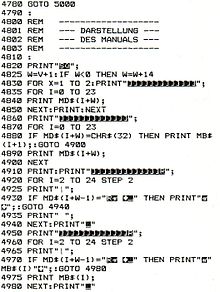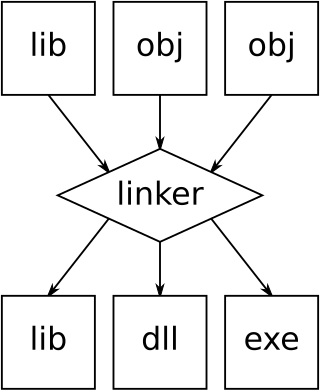

A listing or program listing is a printed list of lines of computer code or digital data (in human-readable form).


A listing or program listing is a printed list of lines of computer code or digital data (in human-readable form).
Listings are commonly used in education and computer-related books to show examples of code.
In the early days of programming, it was used to hand-check a program and as permanent storage. It was also common in 1970s and 1980s computer enthusiast magazines (for instance Creative Computing) and books like BASIC Computer Games for type-in programs.
Today, hard copy listings are seldom used because display screens can present more lines than formerly, programs tend to be modular, storage in soft copy is considered preferable to hard copy, and digital material is easily transmitted via networks, or on disks or tapes. Furthermore, data sets tend to be too large to be conveniently put on paper, and they are more easily searched in soft-copy form.
Assembly-code listings are occasionally analysed by programmers who want to understand how a compiler is translating their source code into assembly language. For example, the GNU C Compiler (gcc) will produce an assembly code listing if it is invoked with the command-line option -S. [1]
Listings of computer programs are still important in US patent law. They are defined as follows in the Manual of Patent Examining Procedure: [2]
"A computer program listing for the purpose of this section is defined as a printout that lists in appropriate sequence the instructions, routines, and other contents of a program for a computer. The program listing may be either in machine or machine-independent (object or source) language which will cause a computer to perform a desired procedure or task such as solve a problem, regulate the flow of work in a computer, or control or monitor events. ... Any computer program listing may, and any computer program listing having over 300 lines (up to 72 characters per line) must, be submitted on a compact disc in compliance with § 1.52(e)."

In computer programming, assembly language, often referred to simply as assembly and commonly abbreviated as ASM or asm, is any low-level programming language with a very strong correspondence between the instructions in the language and the architecture's machine code instructions. Assembly language usually has one statement per machine instruction (1:1), but constants, comments, assembler directives, symbolic labels of, e.g., memory locations, registers, and macros are generally also supported.

The GNU Compiler Collection (GCC) is a collection of compilers from the GNU Project that support various programming languages, hardware architectures and operating systems. The Free Software Foundation (FSF) distributes GCC as free software under the GNU General Public License. GCC is a key component of the GNU toolchain which is used for most projects related to GNU and the Linux kernel. With roughly 15 million lines of code in 2019, GCC is one of the biggest free programs in existence. It has played an important role in the growth of free software, as both a tool and an example.

In computing, a linker or link editor is a computer system program that takes one or more object files and combines them into a single executable file, library file, or another "object" file.
PL/I is a procedural, imperative computer programming language initially developed by IBM. It is designed for scientific, engineering, business and system programming. It has been in continuous use by academic, commercial and industrial organizations since it was introduced in the 1960s.

Single instruction, multiple data (SIMD) is a type of parallel processing in Flynn's taxonomy. SIMD can be internal and it can be directly accessible through an instruction set architecture (ISA), but it should not be confused with an ISA. SIMD describes computers with multiple processing elements that perform the same operation on multiple data points simultaneously.
The GNU Compiler for Java (GCJ) is a discontinued free compiler for the Java programming language. It was part of the GNU Compiler Collection.

The GNU Autotools, also known as the GNU Build System, is a suite of programming tools designed to assist in making source code packages portable to many Unix-like systems.
In software development, Make is a command-line interface (CLI) software tool that performs actions ordered by configured dependencies as defined in a configuration file called a makefile. It is commonly used for build automation to build executable code from source code. But, not limited to building, Make can perform any operation available via the operating system shell.
A low-level programming language is a programming language that provides little or no abstraction from a computer's instruction set architecture—commands or functions in the language map that are structurally similar to processor's instructions. Generally, this refers to either machine code or assembly language. Because of the low abstraction between the language and machine language, low-level languages are sometimes described as being "close to the hardware". Programs written in low-level languages tend to be relatively non-portable, due to being optimized for a certain type of system architecture.
A cross compiler is a compiler capable of creating executable code for a platform other than the one on which the compiler is running. For example, a compiler that runs on a PC but generates code that runs on Android devices is a cross compiler.
In the C and C++ programming languages, an inline function is one qualified with the keyword inline; this serves two purposes:
register storage class specifier, which similarly provides an optimization hint.inline is to change linkage behavior; the details of this are complicated. This is necessary due to the C/C++ separate compilation + linkage model, specifically because the definition (body) of the function must be duplicated in all translation units where it is used, to allow inlining during compiling, which, if the function has external linkage, causes a collision during linking. C and C++ resolve this in different ways.
C99 is an informal name for ISO/IEC 9899:1999, a past version of the C programming language standard. It extends the previous version (C90) with new features for the language and the standard library, and helps implementations make better use of available computer hardware, such as IEEE 754-1985 floating-point arithmetic, and compiler technology. The C11 version of the C programming language standard, published in 2011, updates C99.

LLVM is a set of compiler and toolchain technologies that can be used to develop a frontend for any programming language and a backend for any instruction set architecture. LLVM is designed around a language-independent intermediate representation (IR) that serves as a portable, high-level assembly language that can be optimized with a variety of transformations over multiple passes. The name LLVM originally stood for Low Level Virtual Machine, though the project has expanded and the name is no longer officially an initialism.
In computer science, a tail call is a subroutine call performed as the final action of a procedure. If the target of a tail is the same subroutine, the subroutine is said to be tail recursive, which is a special case of direct recursion. Tail recursion is particularly useful, and is often easy to optimize in implementations.

GNU Ubiquitous Intelligent Language for Extensions is the preferred extension language system for the GNU Project and features an implementation of the programming language Scheme. Its first version was released in 1993. In addition to large parts of Scheme standards, Guile Scheme includes modularized extensions for many different programming tasks.
In computer programming, the block starting symbol is the portion of an object file, executable, or assembly language code that contains statically allocated variables that are declared but have not been assigned a value yet. It is often referred to as the "bss section" or "bss segment".
Interprocedural optimization (IPO) is a collection of compiler techniques used in computer programming to improve performance in programs containing many frequently used functions of small or medium length. IPO differs from other compiler optimizations by analyzing the entire program as opposed to a single function or block of code.

The Parallax P8X32A Propeller is a multi-core processor parallel computer architecture microcontroller chip with eight 32-bit reduced instruction set computer (RISC) central processing unit (CPU) cores. Introduced in 2006, it is designed and sold by Parallax, Inc.
The Portable C Compiler is an early compiler for the C programming language written by Stephen C. Johnson of Bell Labs in the mid-1970s, based in part on ideas proposed by Alan Snyder in 1973, and "distributed as the C compiler by Bell Labs... with the blessing of Dennis Ritchie."
Gcov is a source code coverage analysis and statement-by-statement profiling tool. Gcov generates exact counts of the number of times each statement in a program is executed and annotates source code to add instrumentation. Gcov comes as a standard utility with the GNU Compiler Collection (GCC) suite.